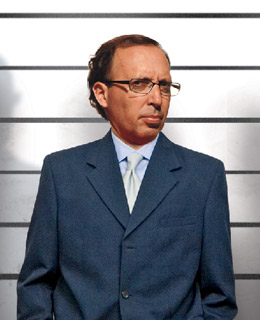Piggy Banks
I.O.U. John Lanchester, 2009
Here is a concise attempt to explain in layman’s terms what went wrong in the financial crisis. It is particularly interesting since the author lives in London and can give us a view from the global epicenter complete with British wit. Unfortunately dry British humor sometimes doesn’t translate so well for an American reader.





Rogues Neeson <> <> <> Citron <> <> <> Iguchi <> <> <> Hamanaka <> <> <> Kerviel
He brings us up to date on the rogues gallery that began with Nick Neeson the Rogue Trader whose more than $1 billion trading losses single handedly brought down century old Barings Bank. The ever expanding gallery now includes Robert Citron of Orange County and Toshihide Iguchi of Daiwa Bank each losing more than $1 billion. Move up to Yasuo Hamanaka of Sumitomo who clocked in at $2.6 billion and on to the current reigning champion Jerome Kerviel of Societe Generale at $7.2 billion.

Joseph Cassano
Consciously missing from this rogues list is AIG’s London based Joseph Cassano who earned $280 million writing CDS insurance policies for much of the CDO industry.To date bailouts to AIG add up to $173 billion, most of which has gone to Morgan Stanley, Goldman Sachs and other big subprime players in the form of insurance payouts.
He briefly explains how banks work, taking deposits and leveraging them into loans far exceeding the value of the deposits. With the invention of securitization and the use of off shore corporations to hide leveraged positions and avoid taxes, leverage went on steroids sometimes reaching 40 or 50 to 1 times deposits or equity.

Genius David X Li
He spends some time on the geniuses (mathematics and statistics) who came up with models that were presumed to eliminate all risk from investment and brought us LTCM that collapsed in 1998. We are now familiar with the VAR risk index based on the Gaussian bell curve much criticized by Nassim Talib (The Black Swan). Here we meet for the first time Chinese immigrant David X. Li (whereabouts unknown) with a PhD in Statistics from the University of Waterloo who suggested applying the Gaussian copula function to the CDO (subprime derivatives) market. Basically, and without any evidence that CDOs fit the function, Li proposed that the price of the insurance policies, the CDS, be used as the metric to determine the level of risk for any CDO. “On Default Correlation: A Copula Function Approach” In other words he proposed a totally circular measurement in which the price of insurance (CDS supposedly reflecting the actual underlying risk of the securitization) is used to determine the risk of the security! Wow! Yet this unbelievably stupid idea caught fire and suddenly, sub prime securitized mortgages were rated AAA, the same as US Treasuries. If this stuff were fiction no one would believe it for a second. This one dumb idea, allowing subprime junk to receive AAA ratings, more than anything else blew up the entire global financial system. The CDO market which was worth $275 billion in 2000 when Li published his paper exploded to $4.7 trillion by 2006.
To accommodate this massive new market, the industry needed vast numbers of new customers. Here is the the birth of the subprime mortgage market. Governments in the US and Britain played their part by staying away from any regulation under the guise of promoting the “ownership society”. Lanchester summarizes:
…by 2006, 60 percent of subprime applicants were lying about their income by more than 50 percent… By that point more than half of all applications for mortgages were either “piggyback” loans, meaning that they were double loans taken out to buy the same property, or “liar loans” in which the applicants were invited to state their own income, or “no doc” loans in which the buyer produced no paperwork. Gee, what could possibly go wrong?…And as for the idea that those peoples’ mortgage payments were being miraculously transmuted into AAA-grade investments…
Where were the regulators? Here is his summary of American government policy:
* insistance on free movement of capital across borders
* the repeal of depression era regulations seperating commercial from investment banking
* a congressional ban on the regulation of credit default swaps
* major increases in the amount of leverage allowed to investment banks
* a light (dare I say invisible?) hand at the Securities and Exchange Commission in its regulatory enforcement
* an international agreement to allow banks to measure their own riskiness
* and an intentional failure to update regulations so as to keep up with the tremendous pace of financial innovation
So what brought us to this disaster?
The credit crunch was based on a climate (the post Cold war victory party of free market capitalism), a problem (the subprime mortgages), a mistake (the mathematical models of risk), and a failure (that of the regulators).
How do we fix this mess? Lanchester doesn’t know.